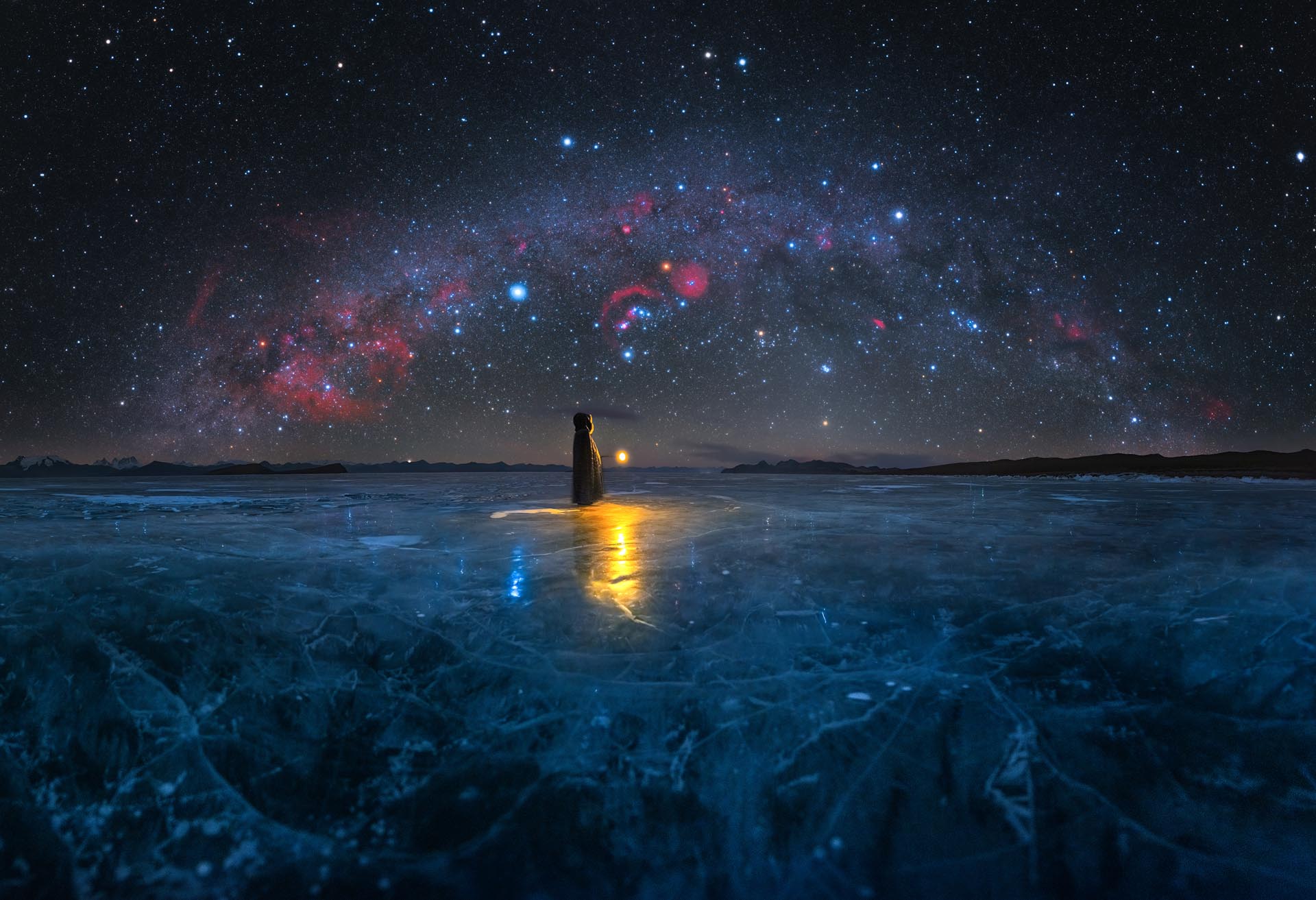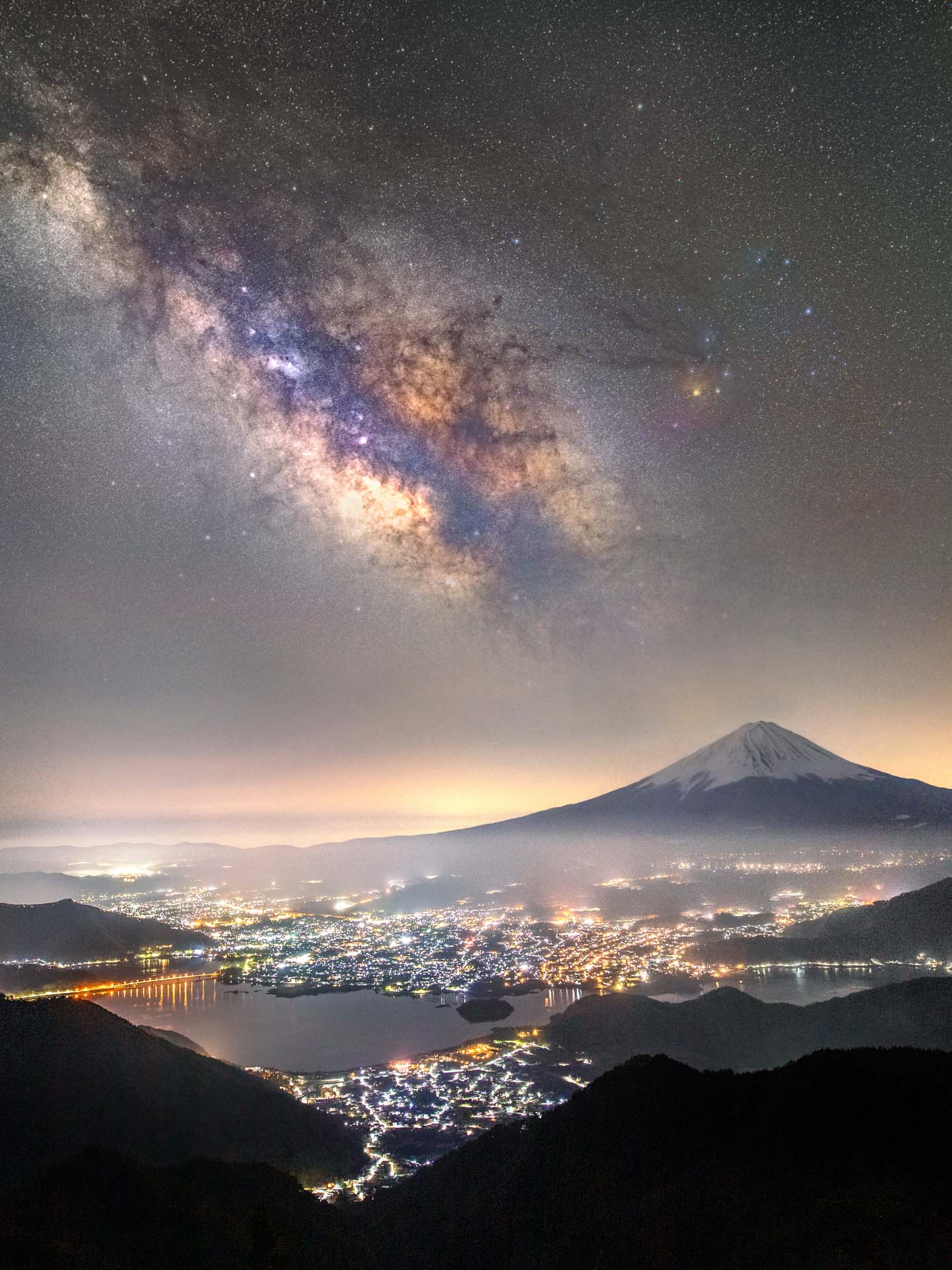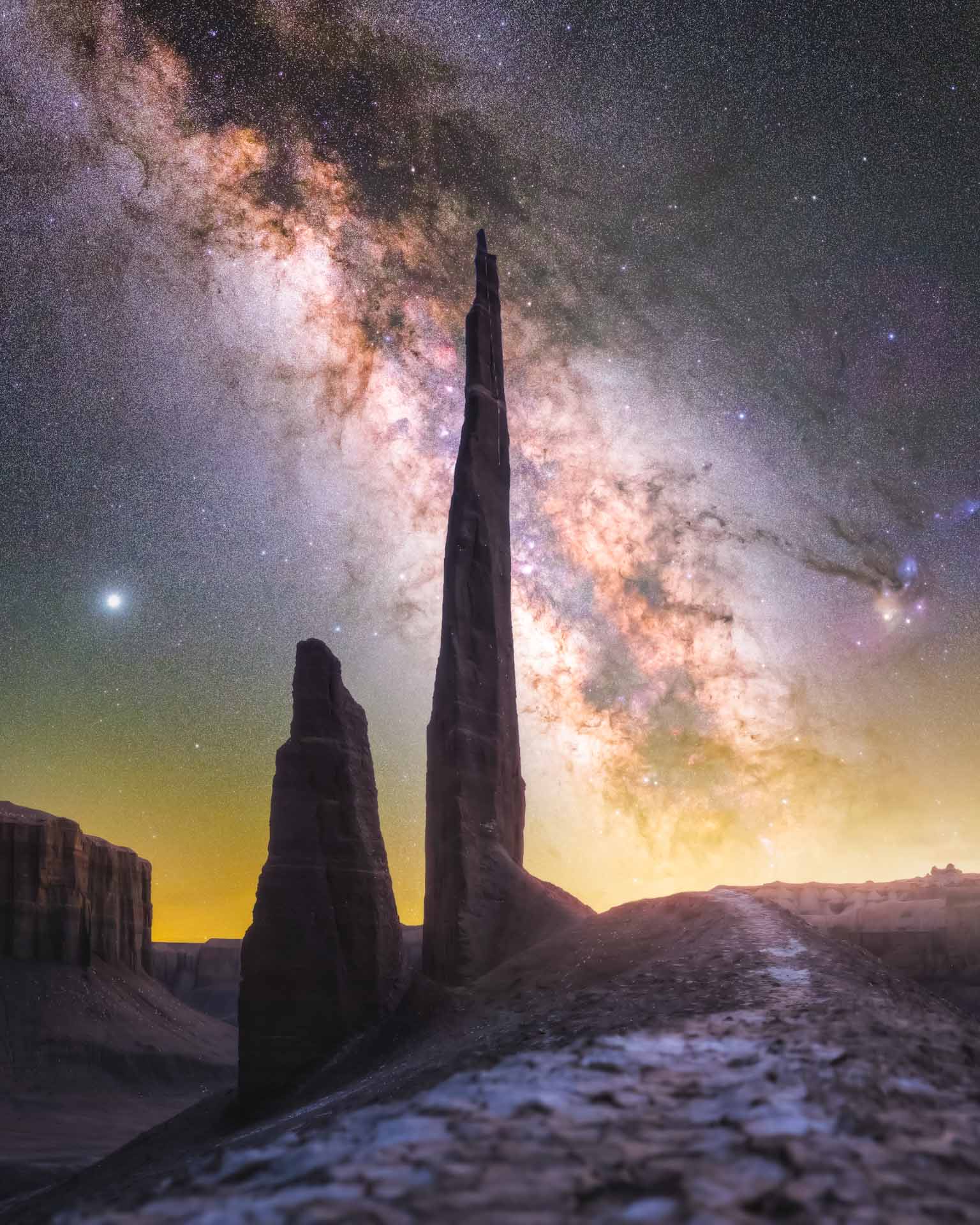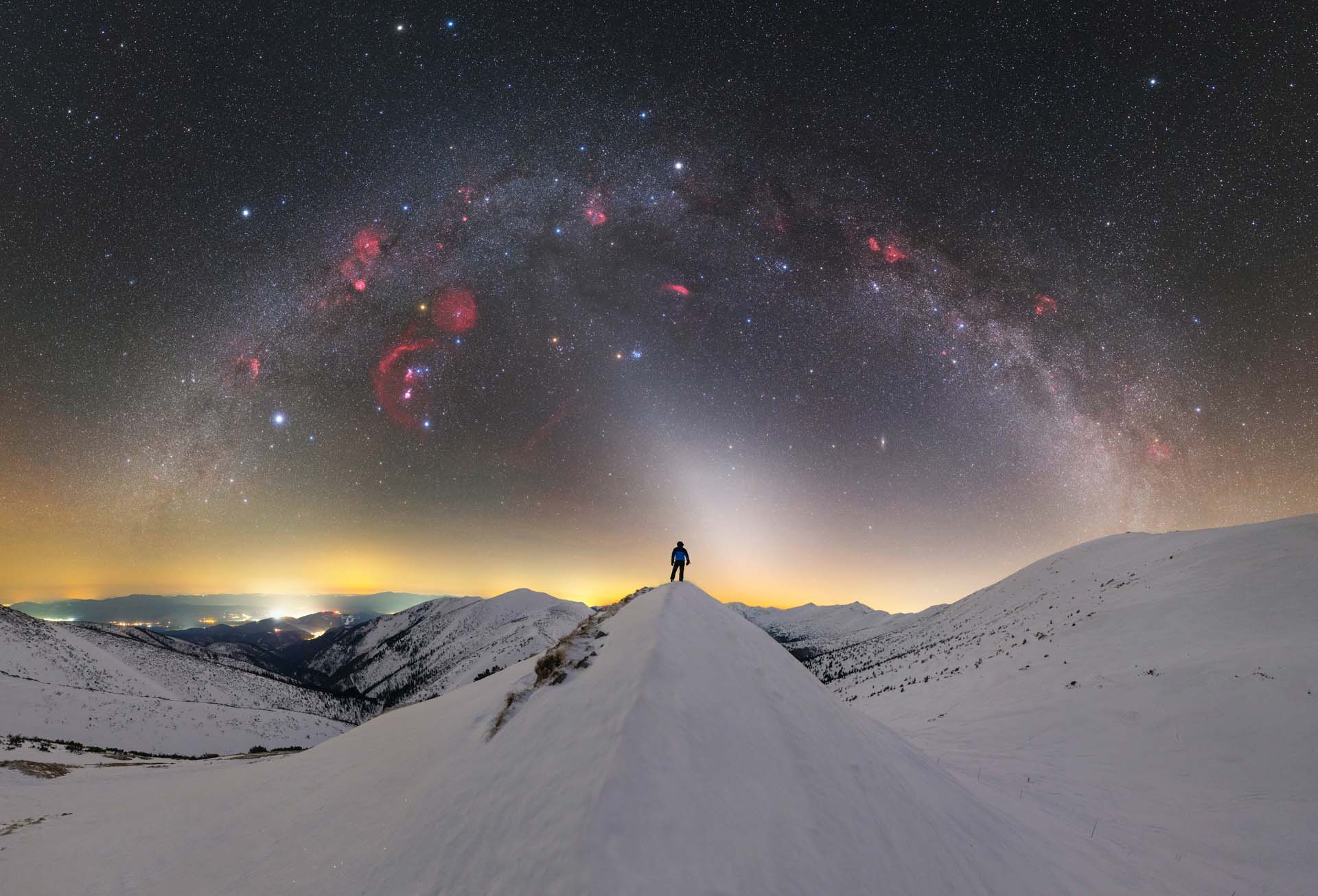
Starlight, star bright, we hope to see the Milky Way on a cloudless night. Astrophotography inspires and reveals wonder and majesty all around us, and dedicated photographers are often out when the world sleeps, documenting dazzling displays.
Capture the Atlas recently announced the winners of its annual Milky Way Photographer of the Year contest, and it’s safe to say that the entries will have us making more than a few wishes on all those beautiful, brilliant stars.
About the Milky Way Photographer of the Year contest
Since 2017, Capture the Atlas, a travel and photography blog focusing on landscapes and astrophotography, has published a collection of the best Milky Way photos from around the world. Each annual compendium features astounding images of the galaxy, alongside the photographers’ anecdotes.
This year, 12 countries and 14 nationalities are represented in the top 25. Here are 10 of our favorite images from the 25 awe-inspiring winning entries.
Ice age

Related: Best cameras for astrophotography
The dashes of red, the icy blue, and the warm glow of the light all contribute to the feeling of magic and wonder on a cold winter night.
“This lake, located in Tibet, freezes every winter,” explains photographer Alvin Wu. “At night, under the low temperatures of minus 20 °C (-4 °F), you can listen to the sound of the ice cracking while capturing the most beautiful winter sky. The blue ice surface and dazzling Orion constellation create a fantasy landscape.”
Egyptian nights

In one coup, photographer Burak Esenby captures both the formidable formations of the White Desert in Egypt with the ephemeral Milky Way splashed across the sky. The expert framing draws the viewers’ eyes along the arch to the brightest patch of stars, and finally to the lonely human form in a stunning reference to the Romantic movement. I instantly thought of Caspar David Friedrich’s ‘Wanderer Above the Sea of Fog.’
“I went to Egypt for the first time,” Esenby recounts. “The White Desert was our focus here, in a place full of nature and Bortle 1-2 skies. In addition to photogenic sand dunes, there are also a lot of particularly shaped rock formations. Due to the many sandstorms, many of these rock formations are uniquely shaped and thus offer a wide variety of compositions. You will easily believe me when I say that it was really fun to be here.”
House of lavender

As a (hopeless) francophile, I’ve seen my fair share of images from the Valensole plateau, but never before like this. I can nearly smell the lavender carried by the gentle midnight summer air as it runs through my hair.
“The smell and atmosphere of these lavender fields are unreal, and standing there among them in the middle of the night is blissful, especially since the bees have gone to sleep and you don’t risk getting stung!” Benjamin Barakat shares. “Nothing is better than a warm summer night with a beautiful view of the night sky and this lonely, iconic house that sits in the middle of the lavender plateau!”
Mt. Fuji and the Milky Way over Lake Kawaguchi

I love this juxtaposition between the stark urban lights, the imposing rise of Mt. Fuji, and how the Milky Way seems to be reaching for the mountain. Takemochi Yuki went out at 3 a.m. for this shot, but it looks like it was worth it.
“This is the only time in spring that you can take a picture of this night view, with Mt. Fuji and the Milky Way,” Yuki explains. “In winter, it becomes difficult to reach the road, since it’s covered in snow. When it gets warmer in the summer, the Milky Way rises to the west and it’s out of frame. I photographed different exposures for the different areas of the scene to balance all the light.”
Perseid meteor shower on Mangart Saddle

Uros Fink captured a spectacularly lively and jubilant show when a few meteors burst into the frame. Though clouds obscured the Milky Way, they also added a little drama and mystery.
“I love nature and being somewhere outside under a starry sky in serene silence. That’s when I feel free, but, at the same time, so small,” Fink says. “What always excites me about photographing the night sky is that you never know what to expect; surprises are happening all over the sky. The highest peak in this part of the Julian Alps is Mangart (2,679 meters), the third highest mountain in Slovenia above which the Andromeda Galaxy emits its light. Slightly to the right of it are Jalovec Mountain and the Loška walls, which rise above the Alpine valley of Loška Koritnica.”
Starlit needle

Leave it to the Badlands to offer up some stunning rock formations.
“This needle-like pinnacle is one such location nestled below a set of blue shale cliffs in the Hanksville Badlands,” Spencer Welling reveals. “The night sky over this region offers some of the darkest, clearest views of the stars in the entire Southwest. On clear, moonless nights, the stars shine bright enough to cast perceptible shadows on the ground, as they did on this night when I was standing below the Needle.”
The Milky Way arching over Pinnacles Desert

To pull together this photo, Trevor Dobson actually created many images—124 to be exact. The result is an incredible panoramic view of the Pinnacles Desert, north of Perth, Australia.
“The Pinnacles are such an amazing location for astrophotography,” Dobson shares. “The area is littered with thousands of these limestone monoliths, which means that composition possibilities are almost endless and one of the reasons I keep coming back here year after year. It’s such a popular spot that I am almost always in the company of other astrophotographers whenever I visit.”
The rocks

Rachel Roberts shot this image in Motukiekie, which is located on The Great Coast Road in New Zealand. According to Roberts, it’s a place where the southern Milky Way’s galactic core will set over ancient sea stacks and exposed reefs.
“While not the composition I was hoping to shoot this night, due to a big swell hindering any chance of getting out onto the main reef, I’m still incredibly happy with what I came away with and really quite proud of the fact I was out shooting at all, as I had just had a baby 6 weeks earlier. The sleep deprivation I was feeling was next level!”
Winter sky over the mountains

To capture the hydrogen-alpha nebulae, which are normally invisible to the eye, Tomas Slovinsky used a Hα filter, and the results are breathtaking with a view of Mars and two star clusters.
“The arc of our galaxy is stretching above the Low Tatras mountains in Slovakia, where the temperatures dropped below -14°C that night,” Slovinsky explains. “Over the subject (me), there’s a bright cone of zodiacal light pointing to a nice conjunction at the time: the Red Planet, Mars, just between two open star clusters, the Pleiades and Hyades.
Path to the past

Somehow, crumbling ruins under a starry sky manage to tell an alluring tale of times past. Jose Manuel Galvan Rangel captures the adventure, mystery, and romance of sneaking away in the dead of night. Who will you meet on the lonely road? A friend, lover, or foe?
“I took this photograph in a remote town in the southwest part of this community called ‘Salvatierra de los Barros,’” Rangel shares. “In this town that’s practically unheard of by the rest of the world, you’ll find an imposing, privately-owned castle that has been standing, under the light of millions of stars, since the fifteenth century.”
How to enter next year
Photographers are welcome to submit their images via email or by tagging Capture the Atlas and using #capturetheatlas on Instagram.
Submissions are open from May 31 to April 30 of the following year.
The post These dazzling photos of the Milky Way will take your breath away appeared first on Popular Photography.